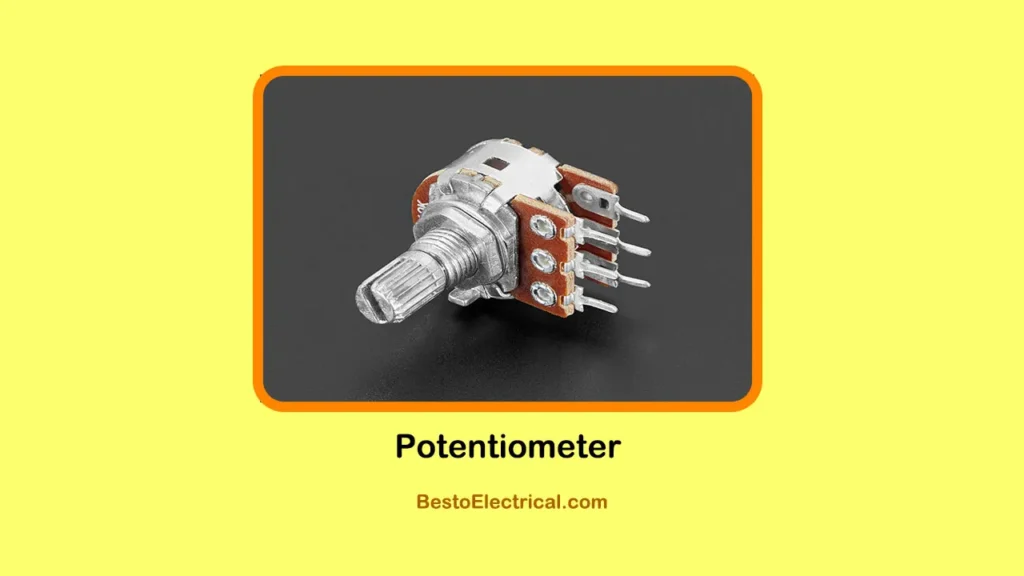Understanding the Benefits of Potentiometers: Why They’re Essential in Electronics
Ever wonder how you can turn a dial and adjust the volume, dim your lights, or change the speed on a fan? That’s a potentiometer at work. It’s a little device that lets you control the flow of electricity, kind of like how a faucet controls water. With a faucet, you twist it one way to get more water or the other way to get less, right? A potentiometer does that with electricity.
Here’s the breakdown: inside, there’s this resistive material with a little “wiper” that moves when you turn the knob or slide the lever. By adjusting where that wiper is, you’re basically telling the circuit, “Hey, send more power through” or “Hold back a bit.” That’s why you can gradually turn up your music instead of it blasting on all at once.
You see potentiometers in all kinds of places. They’re in your car stereo’s volume knob, in dimmer switches at home, and even in some power tools. Audio mixers use them too, with those sliding controls that adjust each sound channel. And yeah, some potentiometers are super small and hidden inside electronics (called trimpots) and help set things just right without needing regular adjusting.
So, next time you’re fine-tuning the brightness or getting the volume just right, remember: there’s a tiny potentiometer in there making it all work smoothly. It’s small but mighty, quietly helping you get things just the way you like them.

Potentiometers: The Tiny Part Behind All Your Favorite Adjustments
Okay, so potentiometers. You might not know them by name, but you’ve definitely used them. Ever turned down the volume on your car stereo? Dimmed the lights to set the mood? Adjusted the fan speed for just the right breeze? Yup, that’s all thanks to potentiometers. They’re these little, adjustable parts inside all kinds of devices that let you control things smoothly. Let’s dig into how they actually work and why they’re everywhere.
So, What’s a Potentiometer?
Think of a potentiometer as a little dial or slider that controls how much electricity flows through a device. Imagine you’re watering plants and you have one of those nozzles that lets you twist to control the water flow. If you want just a sprinkle, you turn it slightly. If you want a full-on jet, you open it all the way. Potentiometers do that with electricity, helping to turn the power up or down.
Inside, it’s pretty simple. There’s a path for the electricity (usually a resistive material like carbon) and a small “wiper” that moves along that path. When you turn the knob or move the slider, the wiper shifts, changing the resistance and controlling how much current flows. More resistance means less current, and less current means a lower volume, dimmer light, or slower motor.
Where Do You Actually See Potentiometers?
Potentiometers are all around us, but they’re quietly working in the background. Here are a few everyday spots:
- Volume Knobs: Car radios, home speakers, guitar amps—turn the volume up or down, and you’re using a potentiometer. It adjusts how much power reaches the speakers.
- Light Dimmers: Want that perfect soft light for movie night? Dimmers let you adjust the brightness, and they’re using potentiometers to control the flow of electricity to the bulb.
- Fan Speed Controls: Ever notice how some fans let you pick between gentle and powerful airflow? The knob you’re turning or dial you’re sliding? That’s a potentiometer, helping control the motor speed.
- Audio Mixers: For anyone who’s worked with sound equipment, those sliding faders are actually potentiometers. They let sound engineers adjust levels for each track in real time.
- Calibration in Electronics: There are also tiny ones, called trimpots, that are often inside electronic devices. You might not see or adjust these, but they’re there to fine-tune settings during setup or maintenance.
Why Are Potentiometers So Popular?
Potentiometers are pretty handy for a few reasons:
- They Let You Fine-Tune Settings: Imagine trying to listen to music with no way to adjust the volume except for a loud on/off switch. Potentiometers give you smooth, adjustable control, so you can set things exactly how you want.
- Super Easy to Use: No learning curve here—just twist a knob or move a slider. Potentiometers are intuitive, which is why they’re in everything from high-tech equipment to household gadgets.
- Versatile: They’re used in all kinds of settings, from simple kitchen appliances to pro audio gear. Since they work in many types of devices, they’re a go-to component for electronics.
Downsides of Potentiometers
Potentiometers are pretty great, but they’re not perfect. Here are a couple of their limits:
- They Wear Out: Since they rely on physical movement, they can wear down over time. If you have an old volume knob that’s a bit scratchy, that’s often due to a worn-out potentiometer.
- Not Built for High Power: Potentiometers are fine for low-power settings like volume control or dimming lights, but they’re not designed for heavy-duty current. You wouldn’t use one for a high-power circuit—it just wouldn’t last.
The Bottom Line
Potentiometers might seem small and simple, but they’re the reason you can make all those tiny adjustments you rely on daily. They’re in so many things, quietly helping you set everything just the way you like. Next time you’re turning a dial or sliding a control, remember—it’s a potentiometer making that smooth control possible.
